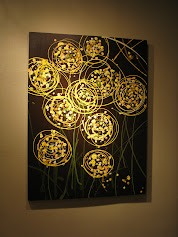 In my last installment of Color Me Michael I wrote about using dark, saturated color. But what exactly are tints, tones and shades? This is color boot camp, so I'm going to give it to you straight.
In my last installment of Color Me Michael I wrote about using dark, saturated color. But what exactly are tints, tones and shades? This is color boot camp, so I'm going to give it to you straight. Take a look at a color strip from your local paint store. On a typical example the color is darkest on the bottom, and it keeps getting lighter as you move up, right? The color in the middle is generally your "pure chroma". Moving up or down you get tint, tones, and shades of it. But how are these extensions of color created? Here's how it works, complete with correct terminology.
Take a look at a color strip from your local paint store. On a typical example the color is darkest on the bottom, and it keeps getting lighter as you move up, right? The color in the middle is generally your "pure chroma". Moving up or down you get tint, tones, and shades of it. But how are these extensions of color created? Here's how it works, complete with correct terminology.- COLOR, HUE, and CHROMA are interchangeable terms.
- A TINT is what you get when you add WHITE to the color
- A TONE is what you get when add GRAY
- A SHADE is what happens when you add BLACK

When choosing a new room color, remember that unless you live somewhere coastal or you're decorating a nursery, tints don't usually come across as very sophisticated. Likewise, neither do the bold effects of pure primaries like red, blue, or yellow. But whenever you add gray or black to a color, creating tones and shades, you automatically increase the level of sophistication.

















No comments:
Post a Comment